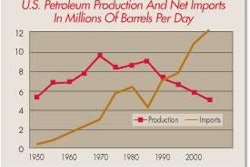The recent episode involving overt cruelty at the Westland Meat Packing plant has implications for all livestock industries. Unfortunately the public are frequently unable to comprehend that “bad apples” can occur in any barrel. Egregious deviations from accepted and mandated welfare standards are unacceptable and should evoke condemnation from the producer group concerned, before the public is assailed with a chorus of accusations from HSUS, PETA and now the AHA.
Before assigning blame for the specific situation one must analyze reasons for the alleged and apparently verified unacceptable practices. Pressure to achieve production throughput, improper training, deficient supervision, failure to follow standard procedures, absence of a ‘welfare culture’ are all possible contributory and interconnected factors in this specific plant. The problems at Westland should not be considered reflective of the entire red meat industry. The episode was however a welcome opportunity for the opponents of intensive production to publicize their cause and to call for restrictions and additional controls on all processors and packers.
“Where were the Feds” is the outstanding question relating to this unfortunate event. If unacceptable practices in handling animals were in fact followed for an extended period this should have been recognized by FSIS personnel and appropriate action taken. In any event “downers” should be subjected to immediate antemortem evaluation as a component of BSE surveillance.
The event has elicited a startling and blatantly impractical reaction from Dr. Temple Grandin, who has called for the installation of direct-feed cameras in plants. Stating “the problem now is that everything is hidden behind big walls and pinstripe suits” is disingenuous if applied to the entire industry which comprises, in part her clientele. The fact that her “live video feed” solution to a specific problem has been supported and amplified by a prestigious organization such as the AHA is evidence of a lack of evaluation and consideration by the current management of an organization marked by 150 years of reasoned and practical intervention on behalf of children and animals. Tim Amlaw, the AHA Program Manager for the American Humane Certified Program stated that “it is time to be proactive -- this has to be a move by the industry to create this level of transparency--third party verification is necessary”. Is this a thinly veiled commercial for the struggling AHA program trying to catch up with the established Humane Farm Animal Care alternative?
Why install cameras? Taxpayers and plant operators are paying for on-site FSIS inspection. Where will the cameras be placed? In how many plants? Who will monitor or have access to the video? At what intervals will videos be examined and with what motivation or justification? What will stop an unscrupulous plant operator feeding a pre-recorded segment into the system? What legal considerations will be raised concerning proprietary or constitutional issues? This knee-jerk response to an apparently isolated contravention of FSIS regulations is typical of the unscientific and illogical reasoning pervading the welfare movement and regrettably those who serve on the plethora of Advisory Panels.




.jpg?auto=format%2Ccompress&fit=crop&h=167&q=70&w=250)













